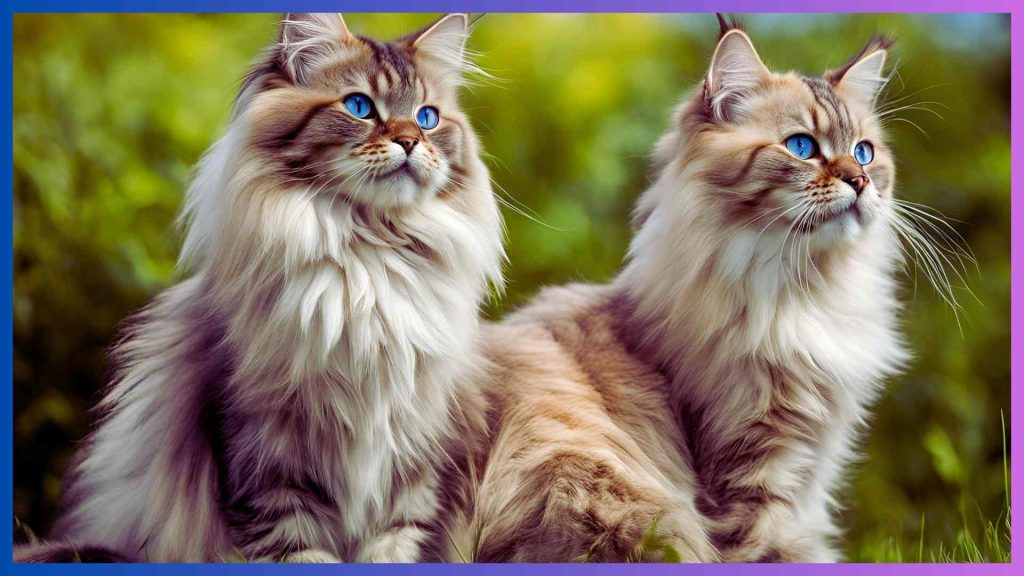I’ve always loved cats, but Siberian cats really caught my eye. Their coats are amazing, showing off a wide range of colors and patterns. These cats, from the tough Siberian wilderness, are not only beautiful but also very loving.
Their coats can have classic tabby patterns or rare colorpoints. Each one is a masterpiece. We’ll look into how genetics create these stunning looks. Whether you love cats or just want to learn more, you’ll find this journey into Siberian cat colors fascinating.
Solid Siberian Cat Colors
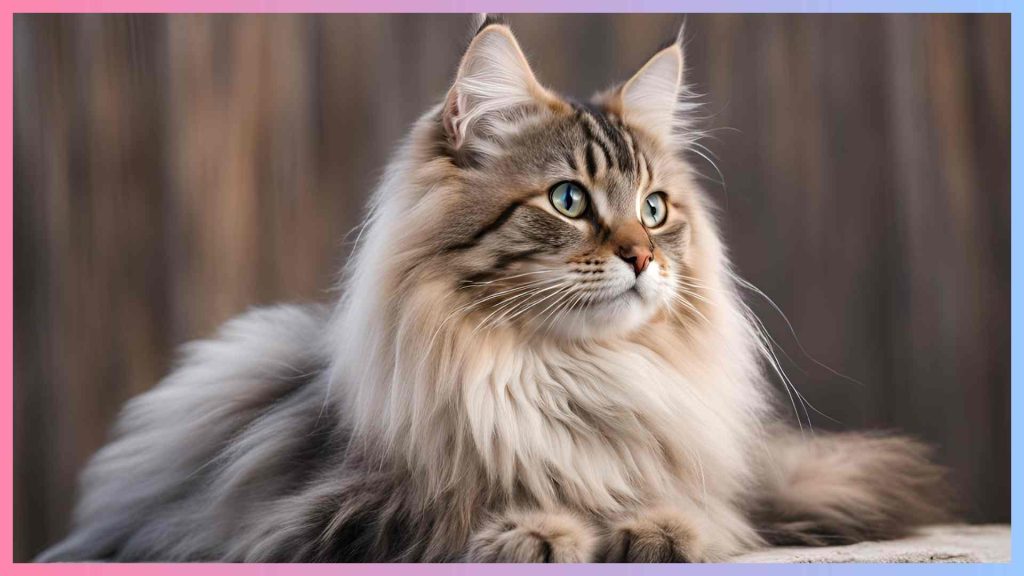
Siberian cats are known for their beautiful coat colors and patterns. Solid colors are a standout feature of this breed. They can be coal-black, pure white, slate blue, brilliant red, or buff or cream.
Eumelanin Pigment
The eumelanin pigment creates the black, blue, and chocolate colors in Siberian cats. It gives them a rich, deep look that adds elegance.
Phaeomelanin Pigment
The phaeomelanin pigment is behind the red and cream colors in some Siberian cats. It brings out vibrant, warm tones that make them special.
Even solid-colored Siberians might have a hidden tabby pattern. Sunlight can also change black coats, adding depth and interest.
| Solid Color Variety | Pigment Responsible |
|---|---|
| Black, Blue, Chocolate | Eumelanin |
| Red, Cream | Phaeomelanin |
Siberian cats come in many solid colors, showing their genetic diversity. Whether you like the deep colors or the warm ones, they are truly beautiful.
Tabby Patterns in Siberian Cats
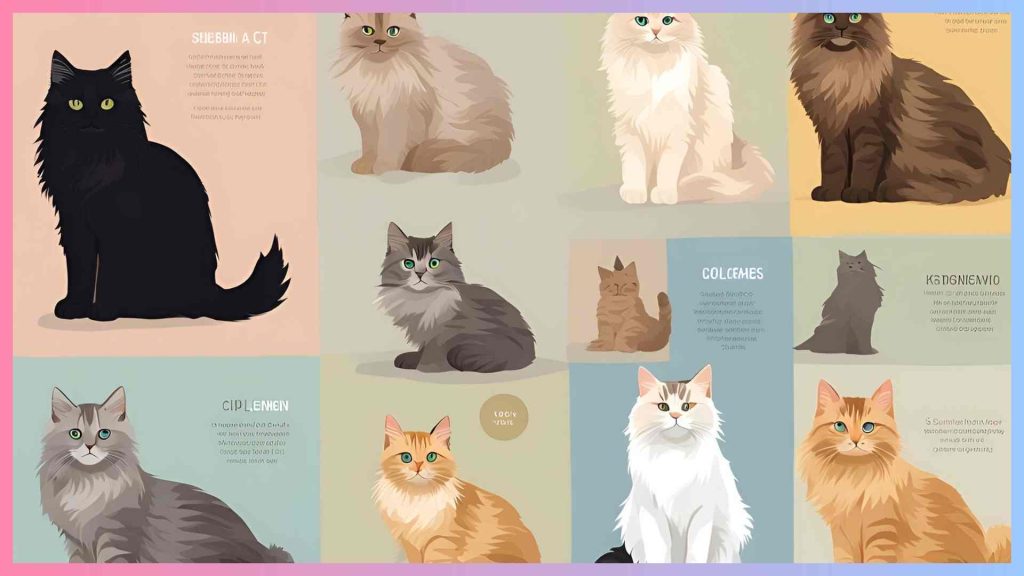
Siberian cats are known for their beautiful tabby patterns. These patterns show the breed’s wide range of colors. The agouti gene causes bands of color on each hair, leading to classic, mackerel, patched, spotted, and ticked tabby patterns.
Siberian tabbies come in many colors like rich browns, deep blacks, vibrant reds, soothing blues, and golden or silver tones. One key feature is the classic “M” marking on their forehead. This is seen in all their coat patterns.
- Siberian cats take about five years to reach full maturity. They have a thick, triple coat that sheds a lot in summer.
- The Cat Fanciers’ Association has breed standards for Siberian cats. They list many colors and patterns, with over 200 variations from Russia’s cold climate.
- Coat colors include black, orange, red, blue, and bi-colors like white, blue, brown, or silver.
- Pattern types range from classic blotched to striped mackerel and shaded tabby designs, like tortoiseshell and calico.
The genetic diversity of Siberian cats is amazing. It shows their ability to adapt and survive. Their unique tabby patterns, with their rich colors and intricate markings, are a true marvel of nature.
Siberian Cats Colors: Sunshine and Silver
Siberian cats are known for their beautiful colors. The “sunshine” and “silver” patterns are among the most stunning. The sunshine gene changes black to a bright yellow, creating tabby patterns in gold, apricot, and cream. These cats show off a range of colors that remind us of the sun.
Blue Sunshine Tabby
The blue sunshine tabby is a favorite among Siberian cat lovers. The dilution gene gives them a blue color, while the sunshine gene adds yellow-gold accents. This mix of cool and warm tones makes them truly unique and eye-catching.
Blue Silver Tabby
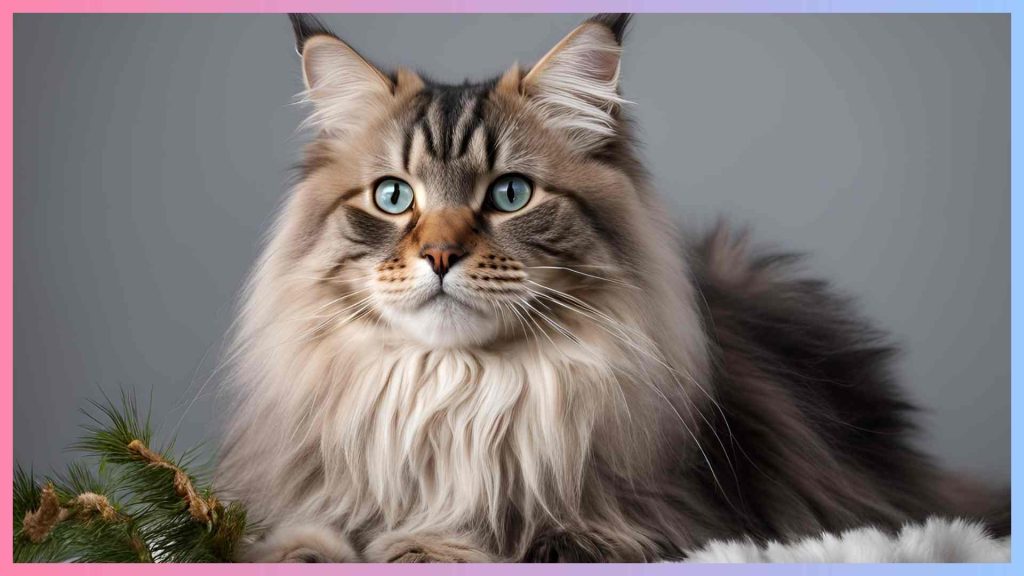
The blue silver Siberian cat has a silvery sheen. The silver gene hides the tabby pattern, making the coat look almost white with blue striations. This creates a stunning, tarnished silver effect that’s both captivating and sophisticated.
The variety of Siberian cat colors and patterns is amazing. From the vibrant sunshine tabbies to the ethereal silver tabbies, they offer a wide range of options. Whether you prefer the warm, sun-kissed hues or the cool, metallic-inspired shades, these cats have something for everyone.
Smoke Pattern in Siberian Cats
Siberian cats are known for their beautiful fur coats. The smoke pattern is one of the most striking. It has a solid base color with a lighter, “smoky” undercoat. When you part their fur, the dark tips and lighter roots create a stunning contrast.
Smoke Siberians come in many colors, like blue, black, cream, and red. They can also have cameo, blue-cream, or tortoiseshell patterns. This pattern is more visible in long-haired Siberians than in short-haired ones.
| Smoke Color Varieties | Prevalence |
|---|---|
| Black Smoke | Most Common |
| Blue Smoke | Moderately Common |
| Cream Smoke | Relatively Rare |
| Tortoiseshell Smoke | Uncommon |
The smoke pattern isn’t just for one color. Breeders have created many smoke-patterned Siberians. From classic black smoke to unique cream and tortoiseshell, the variety is vast. Knowing the genetics of the smoke gene is key for responsible breeding.
“The smoke pattern in Siberian cats is a testament to the breed’s remarkable genetic diversity and the dedication of passionate breeders.”
Bicolor and Tortoiseshell Siberian Cats
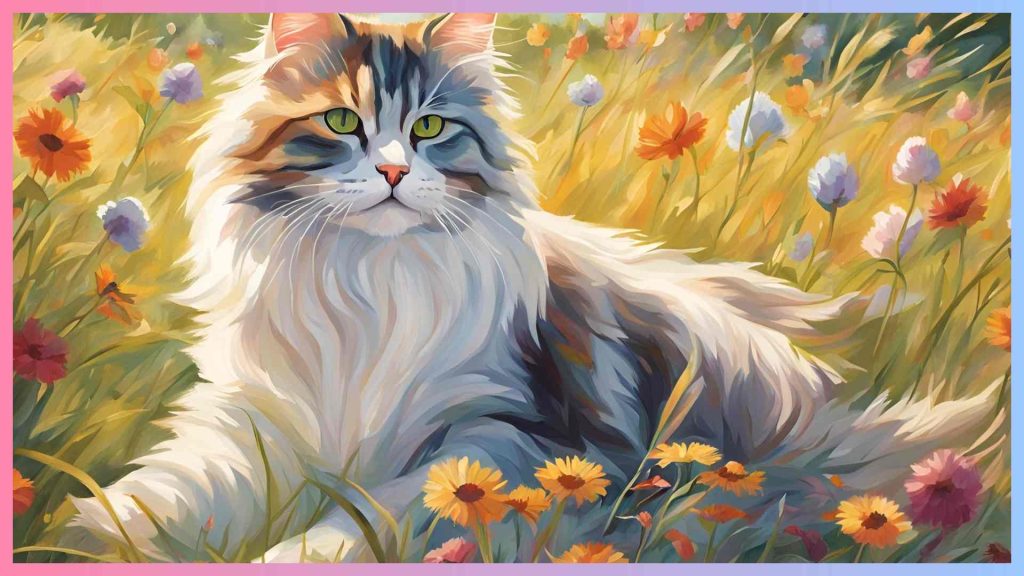
Siberian cats are known for their beautiful coats. Bicolor and tortoiseshell patterns are among the most stunning. These patterns come from the cat’s genetics, making them eye-catching.
Bicolor Siberians
Bicolor Siberian cats have a white base with patches of another color. They often have an inverted “V” on their face. This pattern comes from the siberian cat bicolor patterns gene.
These cats show off a mix of colors. You might see vibrant reds, oranges, blues, or blacks.
Tortoiseshell Siberians
Siberian cat tortoiseshell patterns mix black, red, and cream. The colors are spread out over the cat’s coat. This pattern is due to the cat’s siberian cat bicolor and tortoiseshell genetics.
Only females have this pattern. The gene is sex-linked, making them rare and sought-after.
The process of siberian cat bicolor and tortoiseshell breeding is interesting. Breeders pick these patterns carefully. They need to understand the genetics behind these coats. This ensures these unique Siberian cats continue to amaze people.
| Coat Pattern | Description | Genetics |
|---|---|---|
| Bicolor | Primarily white with patches of another color, often with an inverted “V” shape on the face. | Result of the gene that controls the distribution of pigments in the coat. |
| Tortoiseshell | A mix of black, red, and cream, with the colors randomly distributed across the coat. | A female-only trait due to the red color gene being located on the X chromosome. |
Conclusion
Siberian cats are a true marvel of nature’s art. They come in a wide range of colors and patterns. From solid blues to vibrant sunshines and striking bicolors, they captivate everyone.
These cats have a long history, starting in the Siberian wilderness. They are tough and have beautiful, waterproof fur. They’ve become popular worldwide, loved by many for their beauty and strength.
Exploring Siberian cat colors and patterns reveals a world of genetic diversity. Each cat is unique, showing the breed’s versatility. Whether you’re new or experienced, their colors will touch your heart and deepen your love for nature’s wonders.
FAQ
Q: What are the different solid color varieties of Siberian cats?
A: Siberian cats can have solid colors like coal-black, pure white, slate blue, and brilliant red. They can also have buff or cream. These colors come from pigments in their fur, with eumelanin making black, blue, and chocolate, and phaeomelanin making red and cream.
Q: How do tabby patterns appear on Siberian cats?
A: Siberian cats often have tabby patterns. These patterns can be classic, mackerel, patched, spotted, or ticked. The agouti gene causes these patterns by banding colors on each hair.
Siberian tabbies can show many colors, like brown, black, red, blue, and cream. They can even have golden or silver tones.
Q: What are the “sunshine” and “silver” color variations in Siberian cats?
A: The sunshine gene, also known as the golden gene, changes black pigment to yellow. This creates beautiful tabby patterns in gold, apricot, and cream. Silver Siberians have a white undercoat, giving their fur a shimmering look.
These silver tabbies can be blue, black, or red. The silver gene hides the tabby pattern to some extent.
Q: How does the smoke pattern appear in Siberian cats?
A: Smoke Siberians have a solid base color with a lighter undercoat. This creates a striking contrast when their fur is parted. They can be many colors, including blue, black, cream, red, cameo, and tortoiseshell.
Q: What are the bicolor and tortoiseshell patterns in Siberian cats?
A: Bicolor Siberians are mostly white with patches of another color, often with an inverted “V” on their face. Tortoiseshell Siberians mix black, red, and cream in their fur. These patterns are only found in female Siberian cats.

